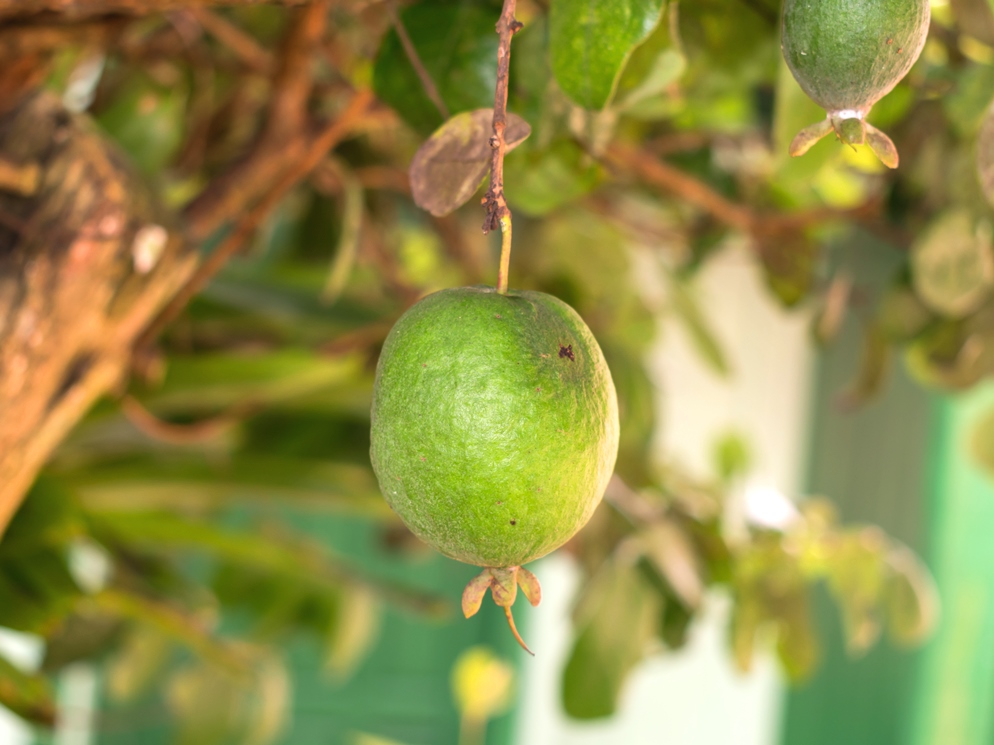A tree with a different fruit, one I had never seen before. But it is quite common to find it here in São Francisco de Paula and we ended up finding one right in the backyard of the house we rented. There are actually three, but one is young and the other was pruned a lot, so only one bore flowers and fruit in the 23/24 season.
First it caught my attention because of the beautiful flowers that began to appear in mid-spring. From these, I was able to identify which tree it was and saw that it was a “relative” of the guava (they are from the same family, Myrtaceae). Its scientific name is Feijoa sellowiana (Acca sellowiana is a synonym), and its popular names are Feijoa or Pineapple guava, and also Goiaba-serrana in Brazil, among others.
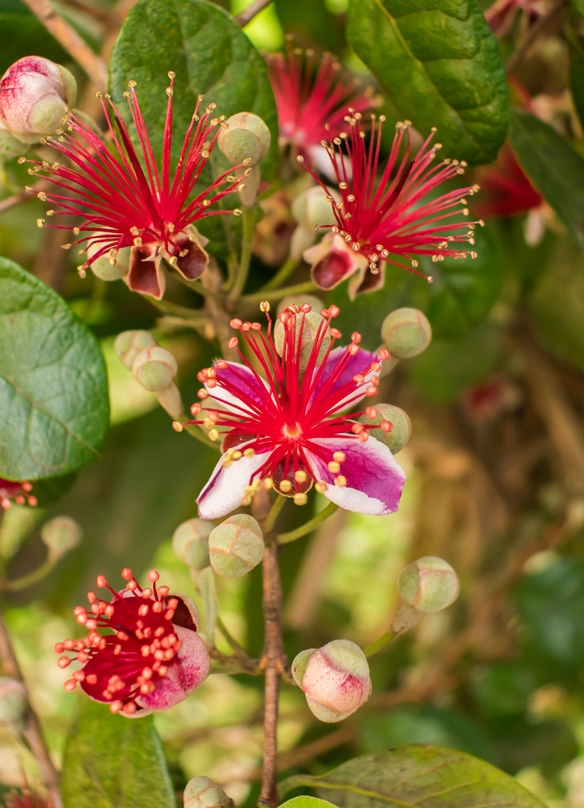
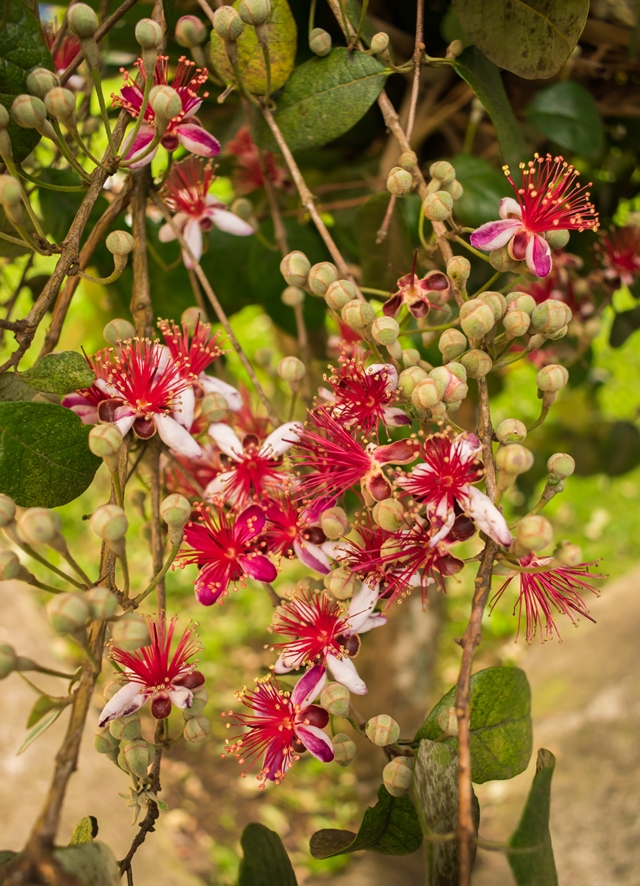
I also discovered that the flower petals are edible and saw that several birds enjoyed them – I also tried some, putting them in a salad. They have a “fragrant” taste.
Afterwards, I just waited for the fruits, I saw them growing green and very hard and I imagined that they would turn yellow when ripe.
But the Feijoa fruit remains green even after it’s ripe, and the only way to know if it is ready to pick is to touch it and see if it comes off the “stem” (pedicel) on its own, or to pick them up on the ground after they fall. However, like its “cousin” guava, it is difficult to pick it before some little bug has already invaded the fruit, lol.
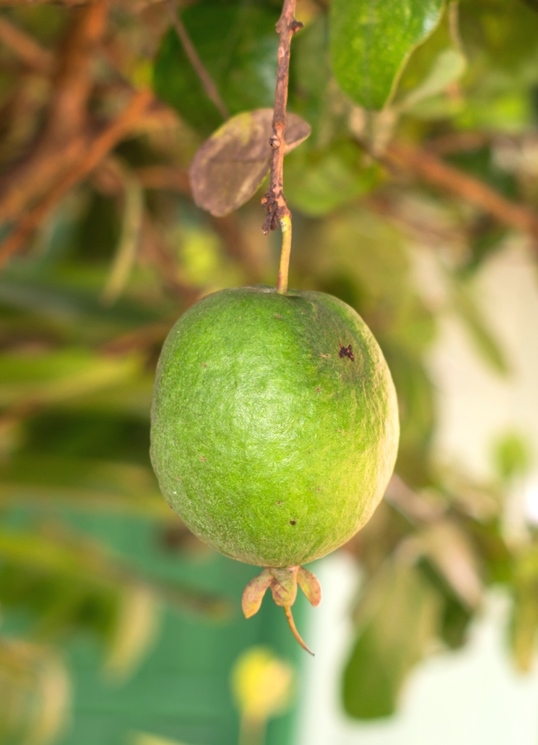
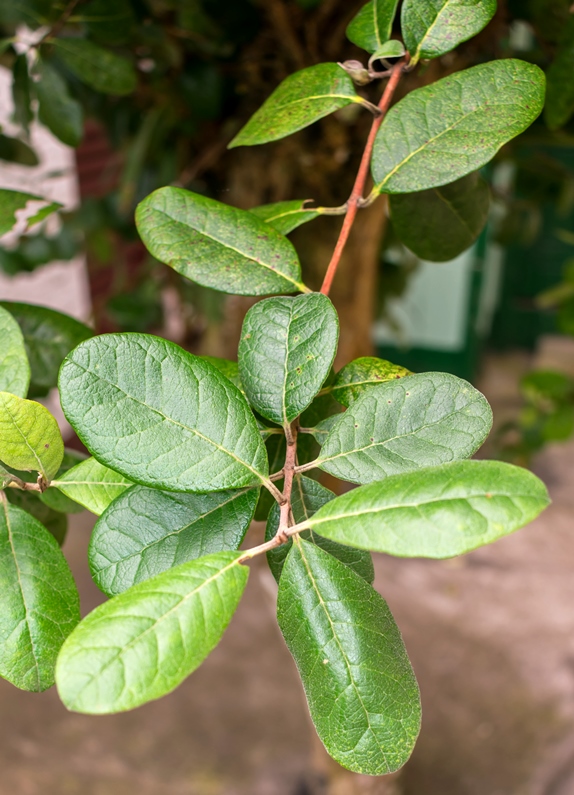
I saw that the fruits had started to ripen at the end of February, when I found some on the ground. The tree is small and is in an area that doesn’t get much sun, so it didn’t produce many fruits. At least I managed to pick about a dozen, and I was able to taste and enjoy them. It’s a very tasty little fruit! It’s sweet and a bit sour at the same time.
The skin remains very hard and thick even after it’s ripe, and only the “core” can be eaten. The easiest way to eat it is to cut it in half and scoop out the pulp with a spoon, like a passion fruit or kiwi. You can see the inside of the fruit in the photos below.
I did some research on the internet and discovered that it’s a tree native to southern Brazil (especially areas above 800 m), eastern Paraguay, Uruguay and northern Argentina. It’s also grown in other countries, being popular in New Zealand for example.
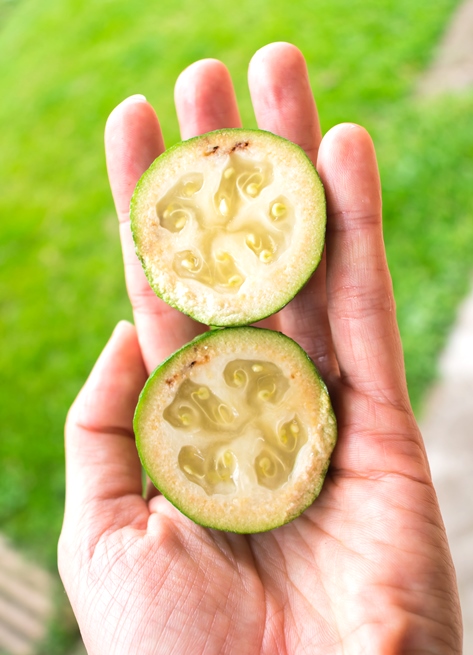
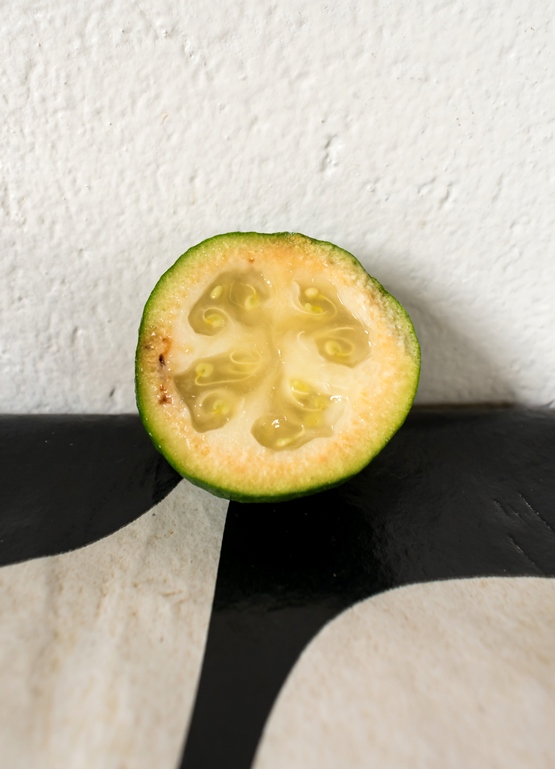
Here in Brazil, there is not much production or sale of this fruit in markets, but I read an article about producers in the Santa Catarina who have invested in the production and sale of this delicious fruit. Perhaps it will become better known and more available in the future.
The recipe possibilities are also endless (juices, smoothies, mousses, jellies, ice creams, liqueurs…) and I saw that it’s also used in the cosmetics industry, in facial creams for example (due to its antioxidant properties). For those who want to know more, the Wikipedia page has lots of information about it.
A beautiful tree with large leaves, beautiful and edible flowers, and a very tasty fruit, which brings joy to the local fauna and humans too, lol.
📸 Pictures made in São Francisco de Paula, Rio Grande do Sul (Serra Gaúcha, South of Brazil).

